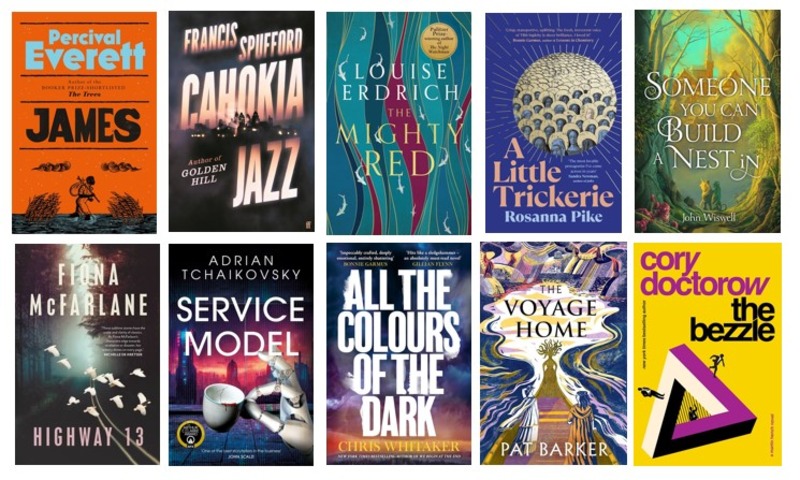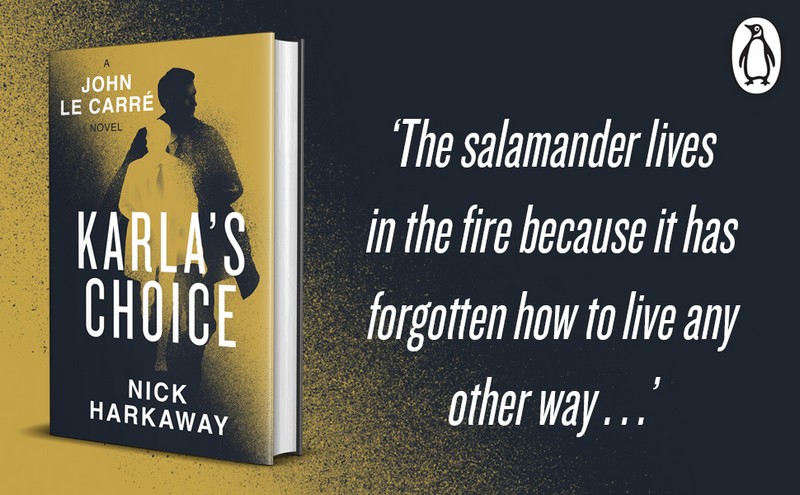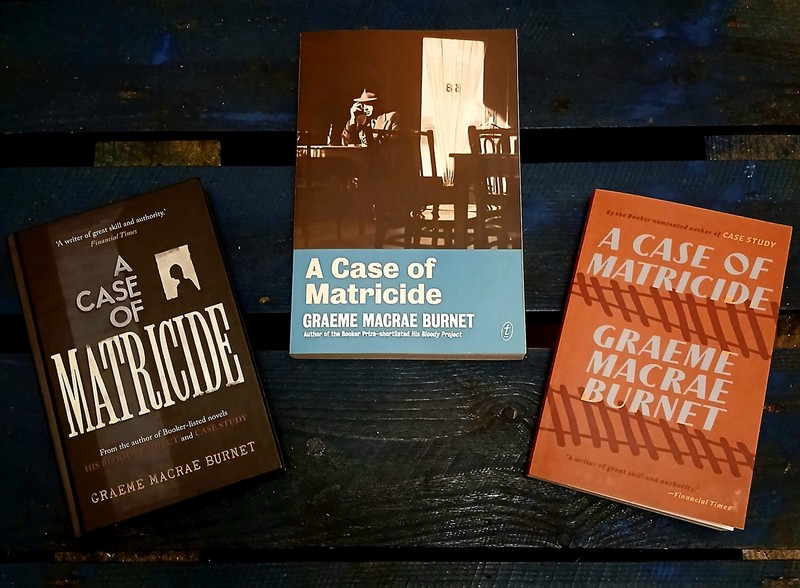 Rhett Davis’s debut Hovering won the 2020 Victorian Premier’s Literary Award for best unpublished manuscript. This award has a reputation over recent years of identifying quality emerging Australian writers. Past winners have included Jane Harper, Peggy Frew, Miles Allinson, Christian White and Maxine Beneba Clarke. So to say there is some expectation around this novel is probably an understatement.
Rhett Davis’s debut Hovering won the 2020 Victorian Premier’s Literary Award for best unpublished manuscript. This award has a reputation over recent years of identifying quality emerging Australian writers. Past winners have included Jane Harper, Peggy Frew, Miles Allinson, Christian White and Maxine Beneba Clarke. So to say there is some expectation around this novel is probably an understatement.
But Hovering does not disappoint. It is a compassionate, surreal, clear-eyed exploration of modern Australia and the place of art in the national conversation, particularly art that critiques the world in which it is created,.
Alice returns home to the Australian city of Fraser (a barely disguised version of Melbourne) after 16 years away. She felt that the people of Fraser had “no hope… no ambition” and had run away to find somewhere that could inspire her.
[Fraser] was no New York, or London or Hong Kong or Rome. No child wondered where it was in the world, imagined what it was like to go there. Its residents lay languidly on beaches, screamed in football stadiums, jostled for position at auctions, exercised aggressively and fought drunkenly after losing money on horses. They aspired to enormous homes with lots of natural light, as if housing gave life its purpose, as if there was nothing more to life than to live it comfortably and beautifully and make your neighbours jealous. They lived fearfully and voted conservatively, terrified that it would all be taken away.
Despite this, but also due to some unfortunate circumstances, Alice comes home to her sister Lydia and her teenage son George, both of whom still live in the old family home in the suburbs. Lydia and Alice are pretty much estranged, but Lydia allows Alice to stay – at least until the Federal Police come looking for her and Lydia’s job is put in jeopardy.
Lydia herself finds solace in a video game called Aurealinius 3 and retreats into the game more and more as her life unravels. Meanwhile George has stopped talking (but not communicating) in an attempt to manage the strange voices he sometimes hears and cannot control.
Alice is an artist, but one who was part of a collective of artists who created a false identity called Helen Kovar. Kovar became famous for a series of provocative formal and guerrilla art installations across Europe.. A tragedy caused by one of Kovar’s newer, unsanctioned works exposes the fraud and Alice is caught up in the backlash. This allows Davis to explore the connection between art and artist:
If the artist is removed from his work, if the context for the work, its creator’s struggles and torments, cannot be established, the work – and the artist – is empty.
But there is also nationalistic anger, followed by a vitriolic media campaign whipped up against Alice claiming that some of her works (as Kovar) were critical of Fraser and Australians. Alice does not see her work as critical but more revelatory of something that is obvious to her.
George is also an artist, but of a different type, creating digital assets that he sells online. George is trying to support his mother but is also tested by the attitude of his newly discovered aunt and by a school assignment that wants him to consider where he will be when he is 30.
How long before he became like his mother? His grandfather? Was this his path: to find a job that made him miserable, to grow to a slow middle age that made him miserable, to give up and stop talking to friends and play video games all day and barely interact with the world? … How long before he gave up too?
Meanwhile, the city itself is literally shifting. Small things at first – lawns moving, streets changing direction, fencing morphing into new materials. But the dislocations become more pronounced and at one point Lydia finds that her house is now perched on top of a grain silo on the outskirts of the city. Slowly, the shifting increases:
The towers on the skyline seem to bend. Cars and people and buildings and paths and trees and streets were being rearranged, lifted and shifted and slid into place. They emerged fully formed from the ground. They morphed and twisted. They became something else or somewhere else …
But there was no machinery at work here. This was an organism. A living creature rearranging itself. Emerging from its chrysalis, dividing or swallowing cells, growing new shoots.
This physical displacement echoes the characters’ shifting world view. It is the city trying to reinvent itself, to shake off the past and become something new.
Underneath all of this, there is hope in Davis’s work – hope that we can see ourselves as we are and become something better. As Alice tries to explain to George:
‘George, there is no straight line. For everything you do, there are billions of things you could have done instead. There are infinite maybes existing all at once. Yes, we’re lost. All of us. We’re all trying to forge paths out of the void, out of the tangled mess of maybes. But we all do.’
Davis uses a range of narrative styles and techniques to explore his themes – including official documents, text conversations, magazine articles and a style of joint stream-of-consciousness – in a way that does not feel tricky but rather provides new angles into the novel. In this way he leads readers into his unique vision of the world.
Hovering is often an unvarnished look at modern Australia. But much like Alice’s work, it also comes from a place of compassion. Davis believes in the individuals – in their capacity to find a way through and support each other, no matter what is thrown at them. And in this way he is able not only to be critical, but to reveal some deeper truths and the promise sitting beneath those critiques.
This review first appeared in Newtown Review of Books.
Robert Goodman
For more of Robert’s reviews, visit his blog Pile By the Bed
Other reviews you might enjoy:
- Shadow City (Natalie Conyer) – book review
- The Lost Flowers of Alice Hart (Holly Ringland) – book review
- Top 5 books of 2022

Robert Goodman is a book reviewer, former Ned Kelly Awards judge and institutionalised public servant based in Sydney. This and over 450 more book reviews can be found on his website Pile By the Bed.



